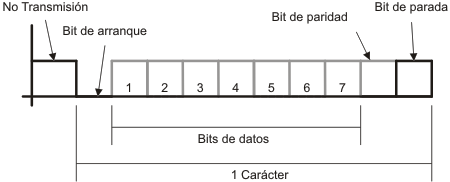Parallel vs Serial Data Transmission: Types & Communication Channels
Parallel Transmission
Parallel: All bits are transmitted simultaneously, followed by a brief interval. This transmission rate is suitable for short distances, typically within a machine or between closely located machines. The primary advantage is speed, while the main disadvantage is cost.
Data multiplexing can also be considered a form of parallel transmission, where data is transmitted on a single line by interleaving different data streams.

Parallel Transmission
Serial Transmission
In serial transmission, the bits of a message are transmitted one after another over a single line.

Serial data
Data emerging from a machine in parallel format is converted into serial data for transmission. At the receiving end, the reverse process occurs, converting the serial data back into parallel format. The bits are transmitted in order of increasing weight, often with a parity bit at the end. A key aspect of serial transmission is synchronous transmission, where the transmitter and receiver accurately recognize the bits.
Timing can be at the bit, byte, or block level, with each level identifying the beginning and end of the data unit. There are two main types of serial transmission:
Asynchronous Transmission
Also known as start/stop transmission, it uses a start bit to signal the beginning of a character and a stop bit to indicate the end.

Format character
Typically, the transmission line is at a high level when idle. Both the transmitter and receiver know the number of bits in a character (e.g., 7 bits). Stop bits define the character length and ensure separation between characters. While commonly used, asynchronous transmission has lower efficiency. For example, transmitting a 7-bit character requires 10 bits, meaning only 70% of the transmitted bits are actual data.
Synchronous Transmission
Synchronous transmission requires the transmitter and receiver to use the same clock frequency. Data is transmitted in blocks, with delimiters indicating the beginning and end of each block. This method is more efficient, allowing for higher data rates. Synchronization is achieved by the transmitter sending a signal that activates the receiver clock, or by using self-synchronizing codes to identify the beginning and end of each bit.
Communication Channel
A communication channel is the physical resource established between transmission mediums for communication.
It is also referred to as a link.
Types of Communication
Simplex
In simplex communication, the transmitter and receiver are fixed, and communication is unidirectional. This is common in broadcast networks where recipients do not need to send data back to the transmitter.

Duplex or Half-Duplex
In duplex or half-duplex communication, both ends can act as transmitter and receiver, but data moves in only one direction at a time. This is often used in interactions between terminals and a central computer.

Full Duplex
Full-duplex communication is similar to duplex, but data moves in both directions simultaneously. This requires different transmission frequencies or separate communication paths. Full-duplex is more efficient than half-duplex for data exchange between computers.
